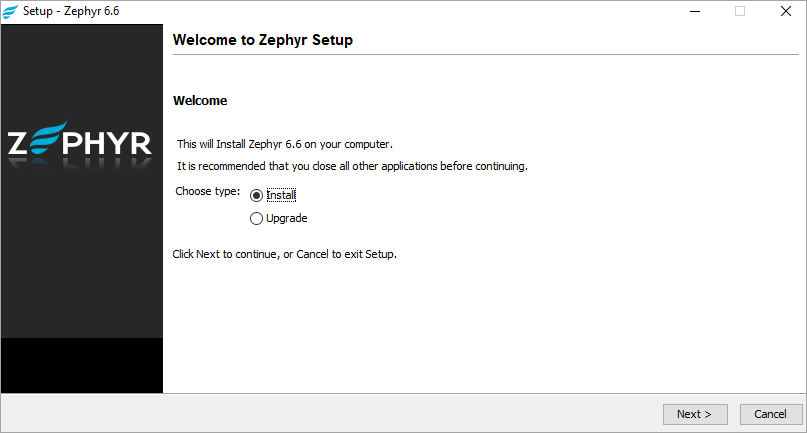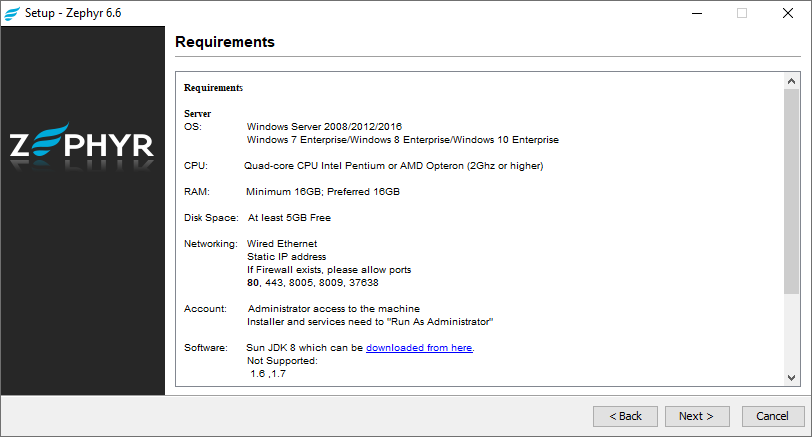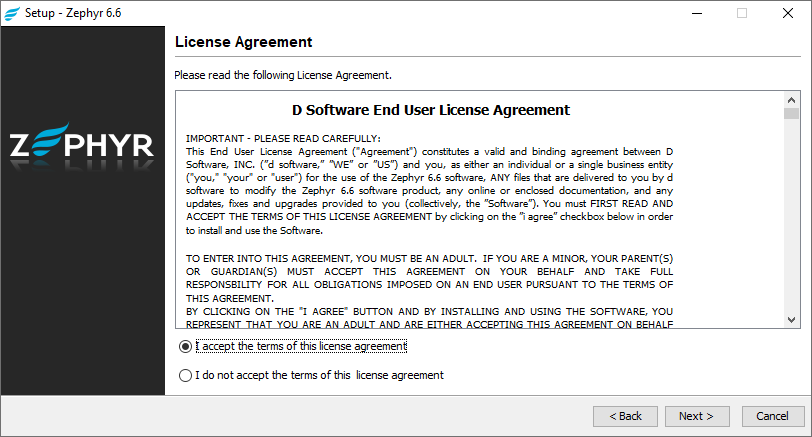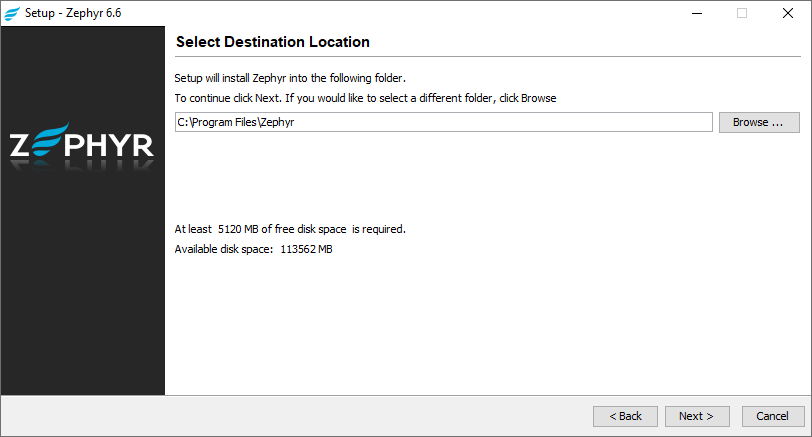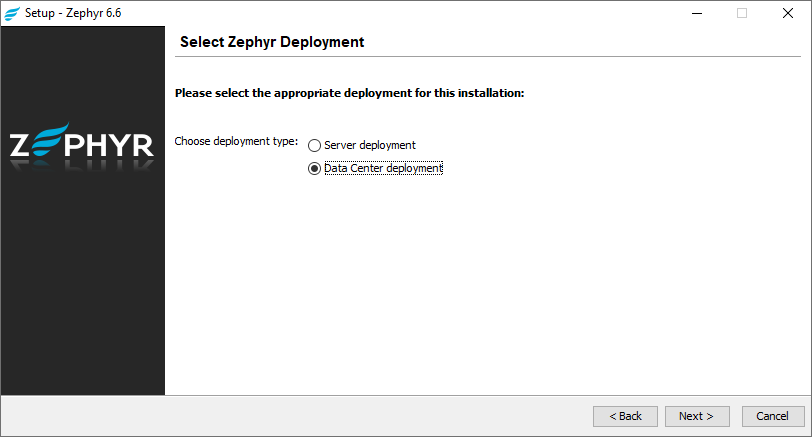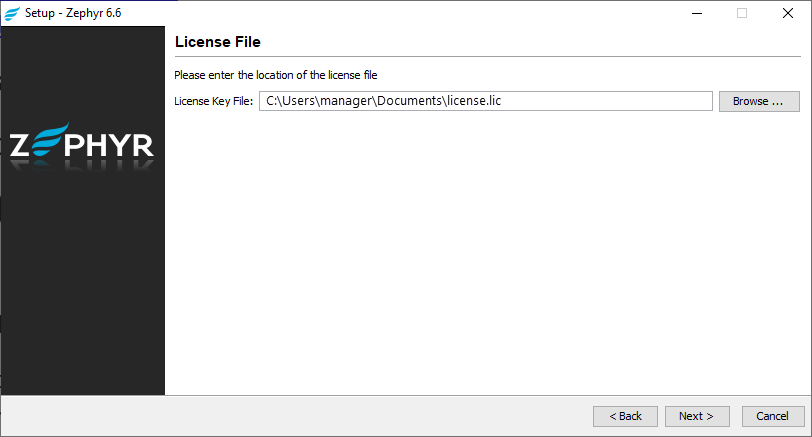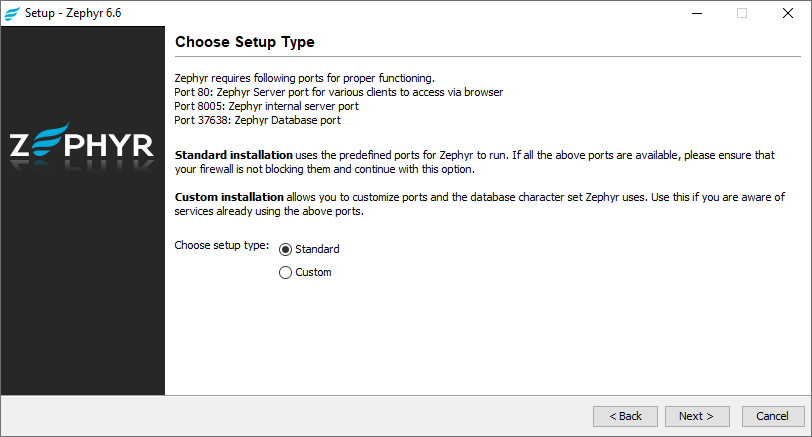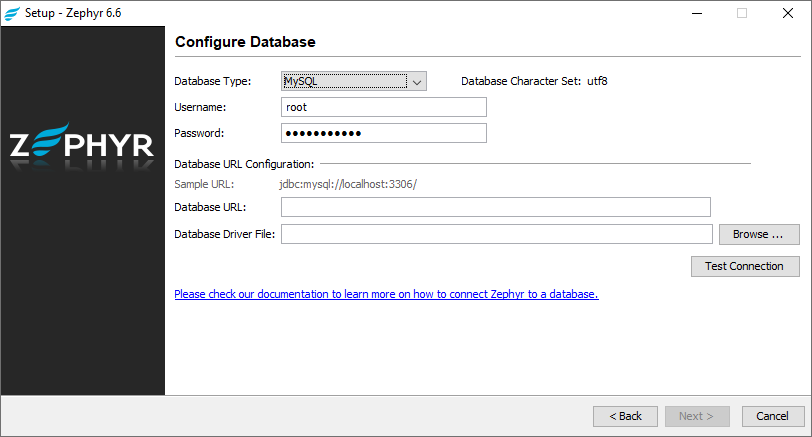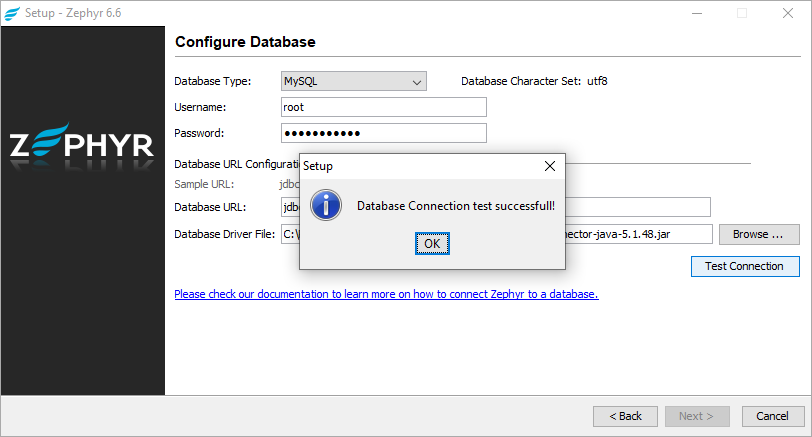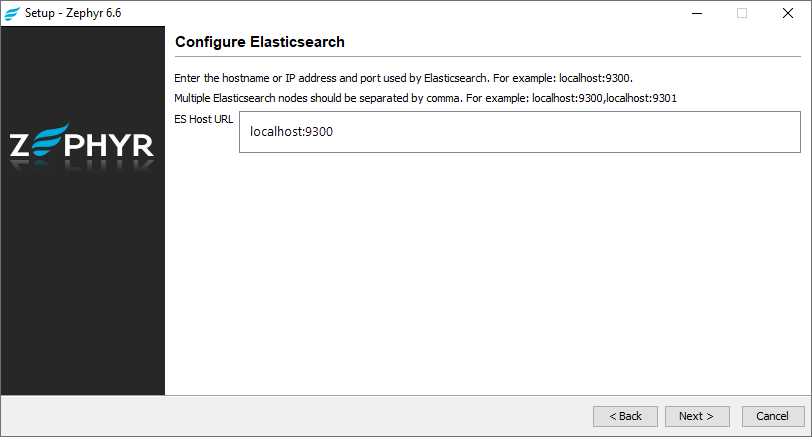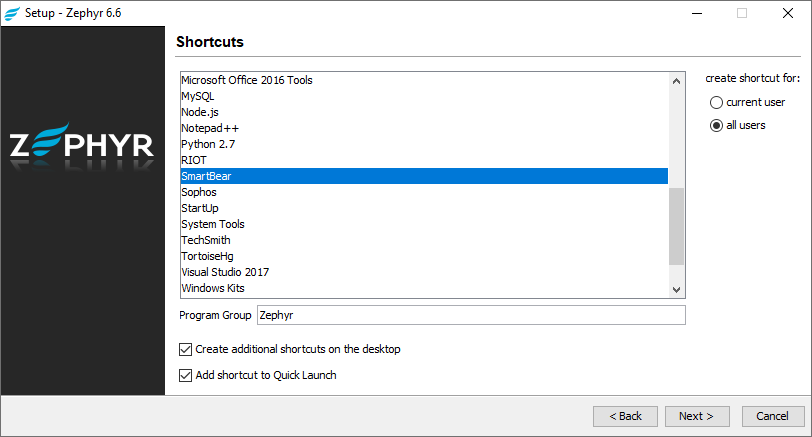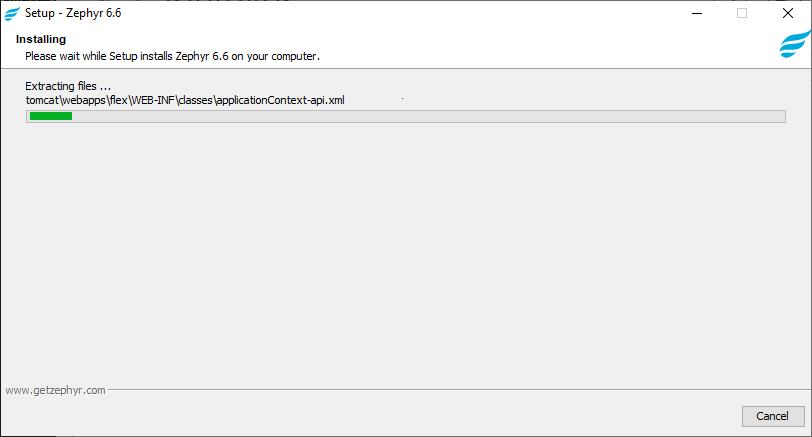...
Make sure the computer meets the system requirements.
Ensure you have the license file (license.lic), as it will be required during the installation process. If you do not have it, please contact your Zephyr Account Manager or contact Zephyr Sales at sales@getzephyr.com.
Download the installation file of Zephyr Enterprise for Windows.
Download a JDBC driver and place it on each node where Zephyr will be installed.
Download and install Java JDK 8u101 or later8. After you install it, set the PATH and JAVA_HOME environment variables. To do that:
PATH variable:
Navigate to Start > Control Panel > System.
Click Advanced > Environment Variables.
Add the path to the bin folder to the PATH variable in the System variables section. A typical path looks like the following: C:\Program Files\Java\JDK_1.8.0_<version>\bin
JAVA_HOME variable:
Navigate to Start > Control Panel > System.
Click Advanced > Environment Variables.
Find the JAVA_HOME variable in the System variables section. If you cannot find it, add it to the System variables.
Add the path to the JDK root folder to the JAVA_HOME variable. A typical path looks like this: C:\Program Files\Java\JDK_1.8.0_<version>
...
| Expand | ||
|---|---|---|
| ||
1. Double-click the installation file and select Install in the Welcome screen: 2. View the requirements, if needed, then click Next: 3. Read the license agreement and accept its terms: 4. Specify the location where you want to install Zephyr. Make sure the disk has enough free space: 5. Choose Data Center deployment, as you are installing Zephyr on a cluster node: 6. Add the license file you received from Zephyr Sales: 7. Select the Standard installation type to use predefined ports, or Custom to use some other ports: 8. In the subsequent window, select the type of the external database you set up earlier, specify the username and password you use to connect to it, the database URL, and the database driver file: 9. Click Test Connection to check that Zephyr can connect to the database: 10. In the next window, Specify the host name or the IP address and port used by Elasticsearch. If you have several Elasticsearch nodes, separate their addresses with commas: 11. In the subsequent window, configure shortcuts and click Next: 12. Wait for the installer to finish the product installation: 13. After you install Zephyr, make sure it is up and running, and then stop the node. |
2. Install Zephyr Enterprise on another node:
...
| Code Block | ||
|---|---|---|
cluster.key=node1 (this should be a unique name of the node) cluster.node.1.key=node1 cluster.node.1.url=172.17.18.141 (the IP address of node 1) cluster.node.count=4 cluster.node.2.key=node2 cluster.node.2.url= 172.17.18.157(the IP address of node 2) cluster.node.3.key=node3 cluster.node.3.url=172.17.18.223 (the IP address of node 3) cluster.node.4.key=node4 cluster.node.4.url=172.17.18.201 (the IP address of node 4) | ||
| Expand | ||
| ||
| Code Block | this should be a unique name of the node)
cluster.node.1.key=node1
cluster.node.1.url=172.17.18.141 (the IP address of node 1)
cluster.node.count=4
cluster.node.2.key=node2
cluster.node.2.url= 172.17.18.157(the IP address of node 2)
cluster.node.3.key=node3
cluster.node.3.url=172.17.18.223 (the IP address of node 3)
cluster.node.4.key=node4
cluster.node.4.url=172.17.18.201 (the IP address of node 4) |
| Note |
|---|
The |
7. Start Zephyr on the first node. When Zephyr starts, you will see the following line in the log file zephyrlocation/tomcat/logs/thedinc.log:
| Code Block |
|---|
***************** Zephyr Started ***************** |
...
